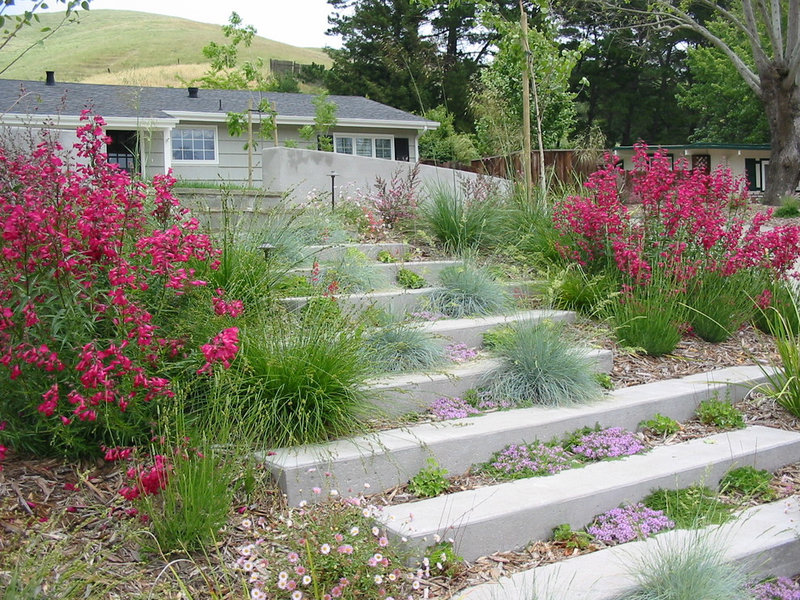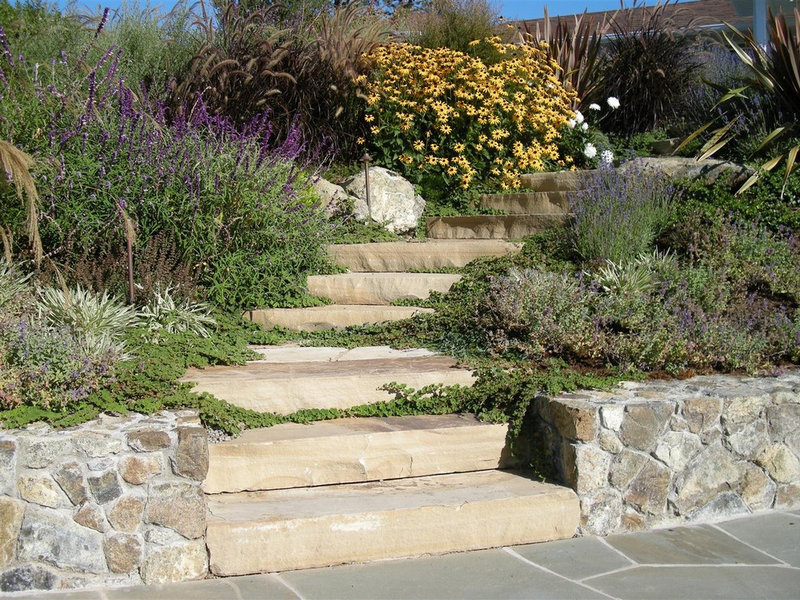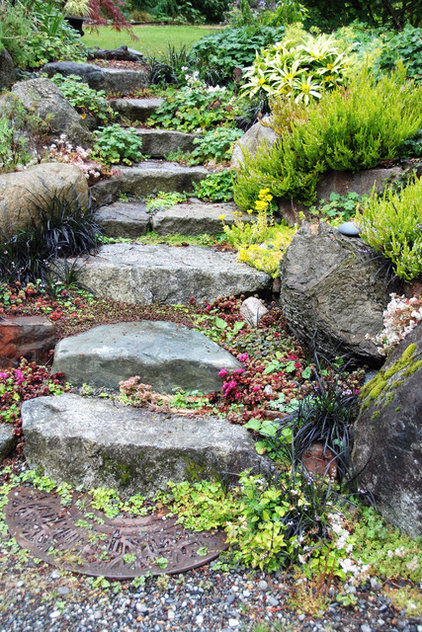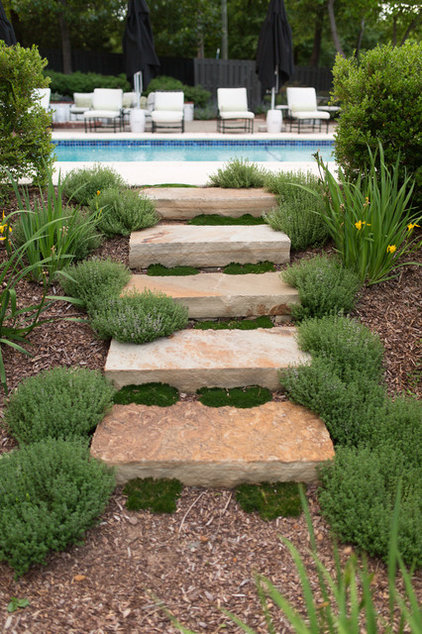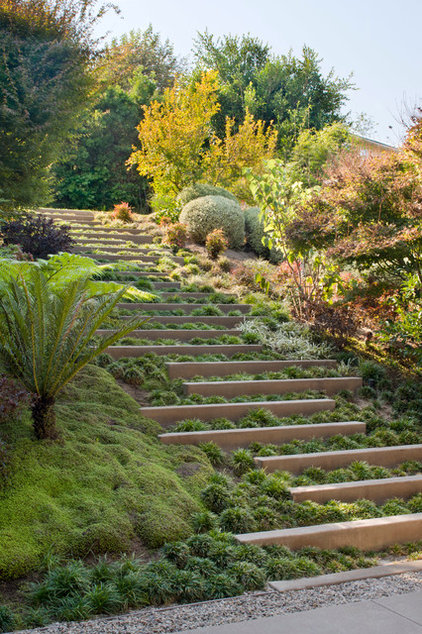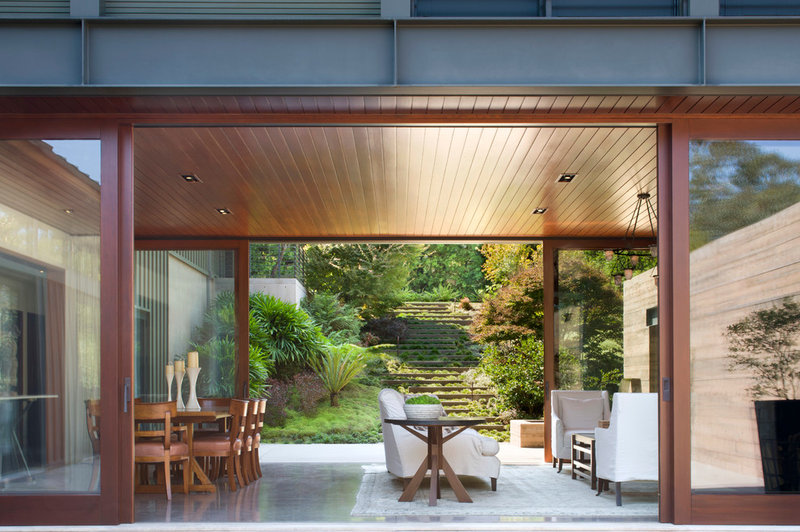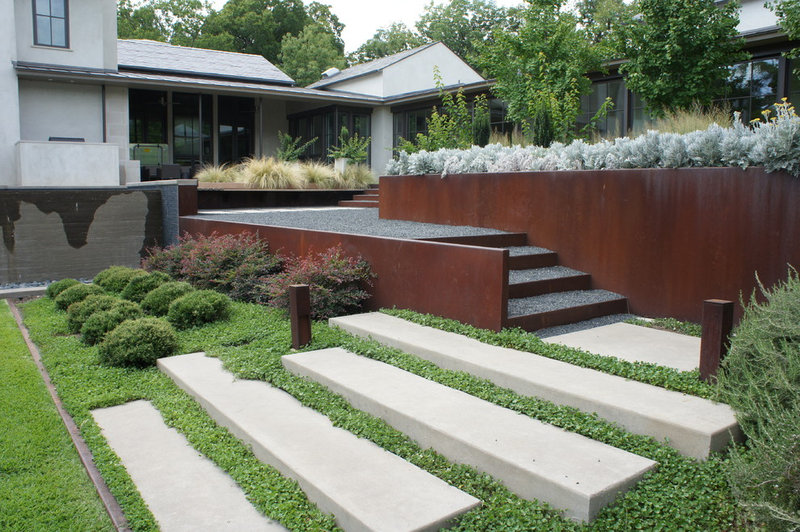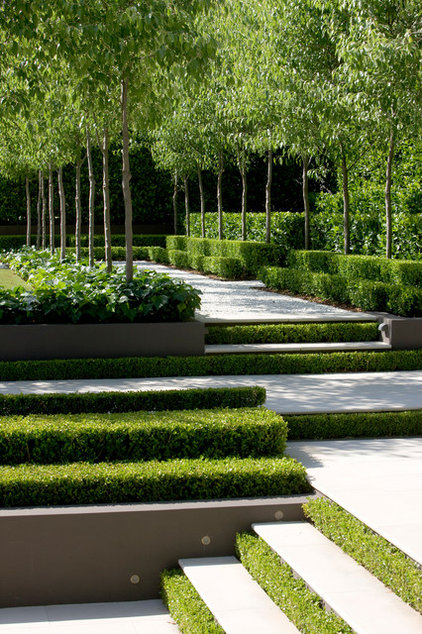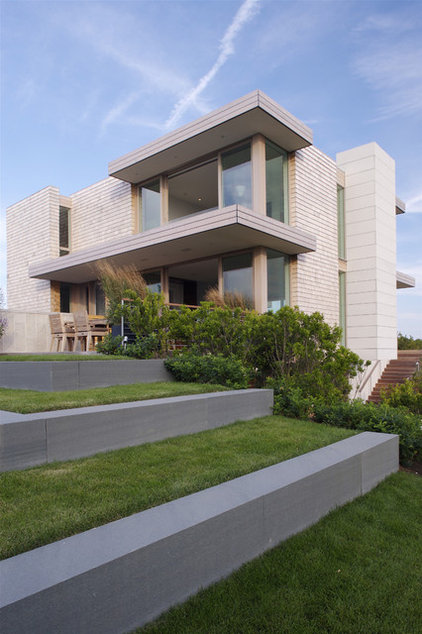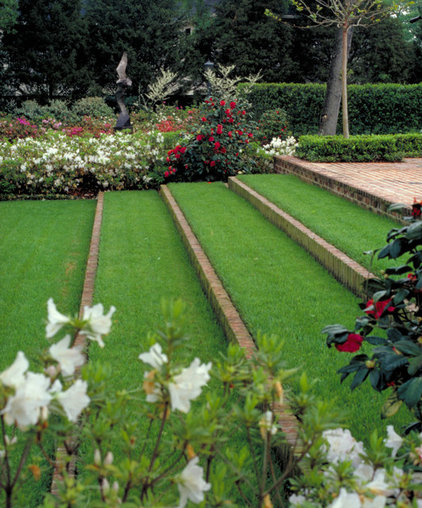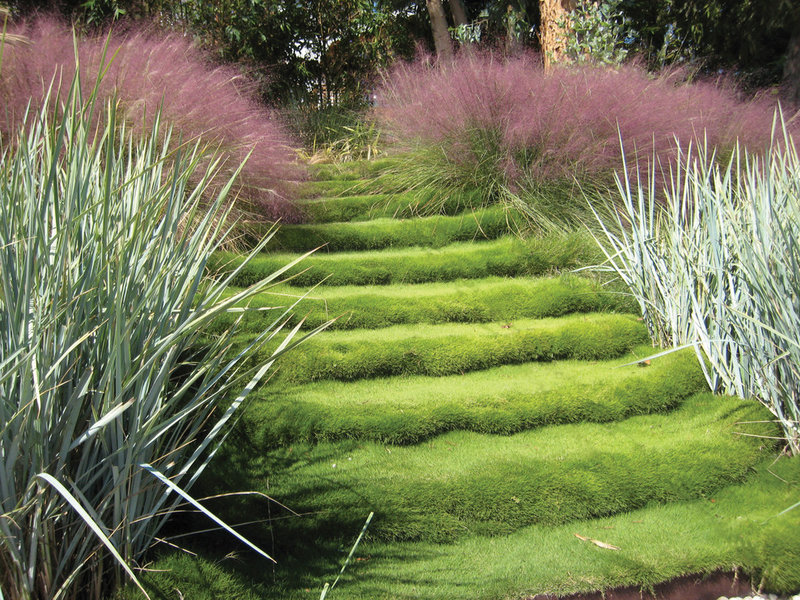Plant Your Steps for a Great Garden Look
How to plant the steps? You may want to make an ornamental feature, soften the hardscape, create a perfect spot for growing crevice-loving specimens or blend the steps in with your planting scheme. Often the only plants we find on steps are weeds that have to be grubbed out, in the words of the Victorian writer and poet Rudyard Kipling, “with broken dinner-knives.” But the fact that weeds find a happy domicile in these spaces shows us there is a range of plants that will happily inhabit them.
Poured-in-place-concrete steps interplanted with Santa Barbara daisy (Erigeron karvinskianus, USDA zones 6 to 9; find your zone), blue fescue (Festuca glauca, zones 4 to 8), creeping thyme (Thymus praecox) and Berkeley sedge (Carex divulsa, zones 4 to 10) lead to this California front yard.
Plants that will achieve this effect include creeping Jenny (Lysimachia nummularia, zones 3 to 9, shown here), perennials like prostrate Veronica (Veronica prostrata, zones 4 to 8) and woolly thyme (Thymus pseudolanuginosus, zones 5 to 8). Cotoneaster microphyllus, zones 5 to 9, and C. dammeri, zones 5 to 8, are two small-leaved evergreen shrubs that, with a bit of judicial pruning, will happily achieve the wanted effect.
See more plants for your pathway
The plant choice is vital. You need to consider how ornamental you want the steps to be and how much room the plant will take up as well as the microclimate that the crevice conditions create. Though steps can protect plants from prevailing winds and scorching sun, they do tend to act as a storage heater, taking in daytime heat and releasing it at night. This encourages the growth of tenderer species but leads to very dry conditions in the crevices. An irrigation system may be required, or you’ll want to carefully select plants that will enjoy the hot, dry conditions.
Suitable plants tend to be compact or low growing and include some herbs, such as thyme (Thymus spp) and golden marjoram (Oregano vulgare ‘Aureum’); spring-flowering plants, including coral bells (Heuchera sanguinea, zones 3 to 9) and sea pink, or common thrift (Armeria maritima, zones 4 to 8); and more succulent species of sedums and Sempervivum.
Plants with a clump-forming habit are perfect for this type of planted stairway, especially where the design requires one species to dominate. This includes some smaller grasses, such as blue fescue (Festuca glauca, zones 4 to 8), blue sedge (Carex flacca, zones 4 to 9), variegated Japanese sedge (Carex hachijoensis ‘Evergold’, zones 5 to 10) and grass-like big blue lilyturf (Liriope muscari, zones 5 to 11). These plants can handle light foot traffic and will need an additional step or to be used where there is infrequent foot traffic.
The grass steps could also be planted as a meadow or splattered with naturalized bulbs. Left planted with the correct choice of grass, it’s an attractive, permeable landscape feature that can handle heavy foot traffic.
